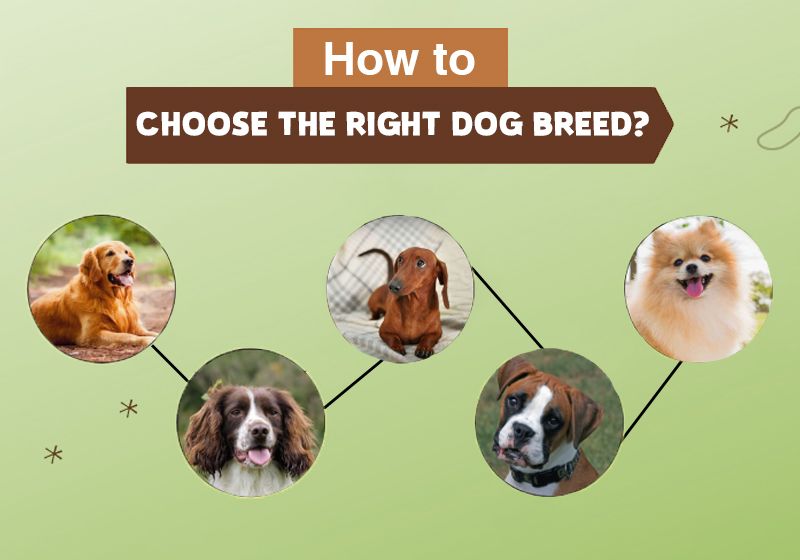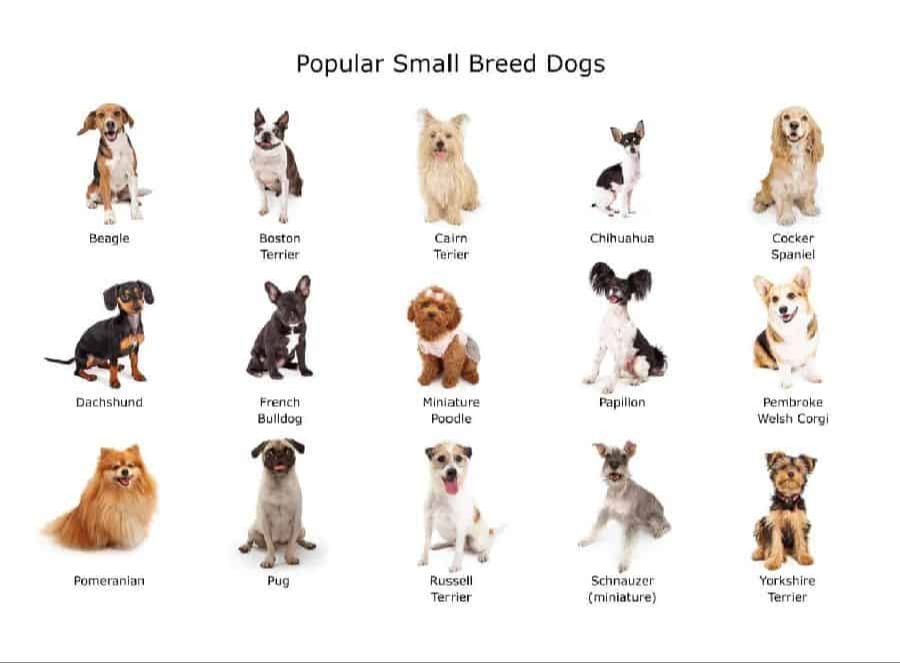Consider Your Lifestyle

When thinking about what dog breed is best for you, it’s important to carefully consider your lifestyle and daily routine. Factors like your activity level, available space, and time for training and exercise will influence what breeds may be a good match.
First, evaluate your activity level and how much exercise and stimulation you can regularly provide a dog. Some breeds like Labrador Retrievers and German Shepherds need a lot of exercise and playtime, between 30-60 minutes a day with high intensity according to sources like the American Kennel Club. Lower energy breeds like Basset Hounds and Pugs only require shorter, less vigorous exercise. Make sure you can meet a breed’s exercise needs, or consider a more easygoing breed if your lifestyle is more sedentary.
The space you have available is also key – large and energetic breeds like Great Danes need room to move around, while apartment dwellers should look for smaller breeds suited to compact living spaces. And be realistic about the time you can devote to training, exercising, grooming and overall care based on your work schedule and lifestyle.
Taking stock of these factors will help narrow down breeds more compatible with your daily life and routine.
Think About Size

When choosing a dog breed, it’s important to consider their size and weight. Larger dogs generally require more space and exercise. Smaller dogs may be better suited for apartment living. Consider these general size categories:
Small breeds usually weigh under 25 pounds. Some examples include Chihuahuas, Toy Poodles, Yorkshire Terriers. Small dogs are often a good fit for smaller homes and apartments that have size or weight restrictions.
Medium breeds weigh 25-60 pounds. Some medium sized breeds are Beagles, Bulldogs, Cocker Spaniels. Medium dogs provide a happy middle ground and often have moderate exercise needs.
Large breeds weigh over 60 pounds. Some large dog breeds are Labrador Retrievers, German Shepherds, Great Danes. Large dogs require the most space and daily exercise.
Make sure to research any size or weight restrictions for your current or future housing situation. For example, some apartments only allow dogs under 25 pounds. Thinking about your lifestyle and living situation in terms of size can help narrow down the breeds that will be the best fit.
Energy Level

When choosing a dog, it’s important to consider their energy level and match it to your lifestyle and activity levels. Some dogs need constant activity and exercise, while others are content with short walks and lounging around the house.
High energy dogs like Labrador Retrievers, Dalmatians, and Siberian Huskies require vigorous daily exercise like running, hiking, swimming etc (The Most and Least Active Dog Breeds Revealed). They can become destructive and develop behavior problems if their needs aren’t met.
Medium energy dogs such as Spaniels, Collies, and Standard Poodles need a moderate amount of exercise daily. A few shorter walks and play sessions will keep them happy and well-behaved.
Low energy dogs like Chihuahuas, Maltese, and Pugs are perfect for less active owners (19 Low Energy Dogs Who Love Being Lazy). They enjoy short walks and quality time with their owners. Easygoing low energy breeds adapt well to apartment living.
Think about your lifestyle and how much time you can dedicate to exercising a dog. An energetic breed will motivate you to be more active, while a mellow companion will happily relax with you.
Grooming Needs
When it comes to grooming, there’s a big difference between short-haired and long-haired dog breeds. Short-haired dogs like Labradors typically only need occasional brushing and bathing every few months. Long-haired dogs like Poodles need much more frequent grooming.
Long-haired breeds need daily brushing to prevent mats and tangles. Without regular brushing and combing, their hair can quickly become an unmanageable mess. Long-haired dogs generally need professional grooming every 4-8 weeks for trimming and clipping. Bathing may be needed as frequently as every 2-4 weeks if the coat gets dirty or smelly. Frequent bathing is especially important for light-colored coated breeds where dirt shows up more visibly.
Some long-haired breeds like Komondors have cords or mats instead of smooth fur. While this does away with the need for brushing, their cords still require maintenance to keep clean, neat, and hygienic. Special bathing techniques are used on these corded breeds.
Short-haired breeds have much lower grooming needs. Occasional brushing once a week or even just once a month is usually sufficient. Bathing is only needed every few months or when they get dirty. Clipping and trimming are not necessary except for show dogs.
So when choosing a breed, think about whether you want a long-haired dog that needs extensive grooming or a short-haired breed that requires minimal coat maintenance. Those without the time, patience, or budget for professional grooming are better off with a short-haired dog.
Trainability

When selecting a dog breed for a new pet, it’s important to consider how trainable the breed tends to be. Some dogs are extremely intelligent and highly motivated to please their owners, making them relatively easy to train. Others can be more stubborn or less focused, requiring more time and effort to teach basic obedience and tricks.
According to this source, breeds like the Papillon and Labrador Retriever are typically easy to train due to their eagerness to please and ability to focus during training sessions. Papillons are described as “intelligent, self-assured, playful, affectionate and happy,” while Labrador Retrievers are prized for being “smart, responsive and devoted.”
Other highly trainable breeds include the Poodle, Golden Retriever, and Shetland Sheepdog, with their combination of intelligence, people-pleasing attitude, and trainability. The Border Collie in particular is considered the world’s premier herding dog, valued for its intense focus, instinct, and ability to learn complex tasks.
When evaluating a breed’s trainability, key factors to consider are intelligence, motivation, ability to focus, and instinctual desire to work with people. The most trainable dogs will be bright, responsive to their owner, and genuinely excited to learn new things through training and play.
Health Issues
When choosing a dog breed, it’s important to consider potential health issues. Some breeds are predisposed to certain conditions while others tend to have fewer health problems overall. According to the American Kennel Club, some of the healthiest dog breeds include the Australian Cattle Dog, Beagle, Chihuahua, Greyhound and Havanese.
For example, Australian Cattle Dogs have an average lifespan of 12-14 years and are not prone to many serious genetic health issues. They have a low risk for hip and elbow dysplasia. Beagles also enjoy good health, living 10-15 years on average. They are active dogs with relatively few chronic health problems. Chihuahuas have a long lifespan of 15-20 years, and are not predisposed to many illnesses. Their small size does put them at higher risk for hypoglycemia and fractures if dropped.
On the other hand, some breeds like English and French Bulldogs are brachycephalic, meaning they have obstructed airways and are prone to breathing issues. Dalmatians are prone to deafness, heart problems and urinary stones. Bernese Mountain Dogs have a short lifespan of only 6-8 years and a high incidence of cancer.
Doing thorough research on a breed’s health tendencies can help determine if they will be a good fit. Focusing on breeds with lower rates of genetic disorders and longer lifespans can help lead to happier, healthier dogs.
Temperament
Some dog breeds are naturally more affectionate and cuddly than others. Breeds like Labrador Retrievers, Golden Retrievers, Cavalier King Charles Spaniels, and Poodles tend to be very loving and bond closely with their owners. They thrive on physical affection and being with their people. Other traits to look for in an affectionate dog include:
- Eager to please – Breeds like Poodles are highly intelligent and aim to please their owners.
- Calm – Low energy dogs like Basset Hounds are happy just being near their owner.
- Friendly – Breeds like Boxers are goofy and friendly, loving to play and interact.
- Good with kids – Gentle breeds like Newfoundlands are wonderful family dogs.
- Gets along with other pets – Companionable breeds like Cavalier King Charles Spaniels generally coexist well with other dogs and pets.
While individual personalities vary, some breeds tend to be more independent and aloof, like Basenjis or Afghan Hounds. Herding breeds like Collies can be friendly but more focused on work than snuggling. Consider a dog’s typical temperament before choosing a breed to find your perfect cuddly canine. For more affectionate small dogs, Yorkshire Terriers, Maltese, and French Bulldogs are good options. Larger affectionate breeds include Golden Retrievers, Labrador Retrievers, and Pit Bull Terriers (https://www.rd.com/list/affectionate-dog-breeds-that-love-to-cuddle/). The most important factor is choosing a dog whose personality and activity level matches your lifestyle.
Breed Tendencies
Certain breeds are known for behaviors like barking, chewing, and digging more than others. For example, terriers were originally bred to hunt small game and tend to be energetic, vocal dogs prone to digging. Hounds were bred to vocally track scents, so barking comes naturally to breeds like Beagles and Coonhounds. Herding breeds like Collies and Shepherds also have a tendency to bark and nip when trying to herd their families. Small dogs like Chihuahuas and Yorkies may bark more due to their size making them feel threatened.
High energy working and sporting breeds like Labradors, Boxers, and Dalmatians need plenty of exercise and mental stimulation to prevent destructive chewing. Heavy chewers like Pit Bulls and Bulldogs may benefit from strong chew toys. Scent hounds and breeds with hunting instincts like Beagles, Basset Hounds, and Dachshunds are more likely to wander and follow their noses when they pick up an interesting smell. Terriers are known for digging, so providing an approved digging area can prevent destroyed gardens.
While breed tendencies give some indication, each dog is still an individual. Proper training, exercise, and outlet for natural behaviors is key for any dog. Consult specific breed guides to learn about traits common to that breed.
Sources:
https://furbo.com/blog/en/article/10-breeds-that-bark-the-most
https://www.scotsman.com/lifestyle/family-and-parenting/loud-dogs-2023-these-are-the-10-breeds-of-adorable-and-vocal-dog-likely-to-bark-howl-and-growl-including-the-loving-labrador-3347718
Costs
The costs associated with dog ownership can really add up over time. According to the American Kennel Club (AKC), the total lifetime cost of owning a dog ranges from $15,051 for a small dog to $15,782 for a medium dog to $17,280 for a large dog. This factors in expenses like the initial purchase price or adoption fee, food, supplies, medical care, training, grooming, boarding, and more. On average, the AKC estimates an annual cost of $1,480 for a small dog, $1,689 for a medium dog, and $1,962 for a large dog.
The initial purchase price or adoption fee for a dog can vary greatly depending on the breed, availability, and whether you go through a breeder or rescue/shelter. Purebred dogs from breeders typically start around $500 and can be over $2,000, while adoption fees at shelters often range from $50-$300. Food costs also depend on the dog’s size, averaging $200-$400 annually for a medium sized dog. Medical expenses like vaccinations, heartworm and flea prevention, checkups and emergencies can tally $435-$875 per year. Other recurring costs like treats, toys, boarding and pet insurance should also be factored in. While expensive, responsible dog ownership requires proper budgeting for all these inevitable costs.
Choosing a Breeder
Finding a responsible, reputable breeder is key to getting a happy, healthy dog. According to the AKC, there are several tips for identifying responsible breeders:
- Meet the breeder in person and visit their facility. This allows you to see the conditions the dogs are raised in.
- Ask lots of questions about health, temperament, early socialization, etc. A good breeder will be knowledgeable and transparent.
- Insist on seeing the puppy’s parents. This helps gauge temperament, appearance, and health.
- Get a complete medical history of the puppy’s parents and grandparents. Reputable breeders screen for health issues.
- Avoid breeders who seem focused on making a quick sale. Responsible breeders want their puppies to go to good homes.
Responsible breeders provide health guarantees, agreeing to take back or assist with dogs that develop issues like genetic defects. They invest in their dogs with proper veterinary care, exercise, socialization and screenings for health and temperament. While they may be more expensive upfront, dogs from responsible breeders are worth it for their health and temperament. See the AKC and HSUS for tips on identifying and choosing a responsible breeder.
